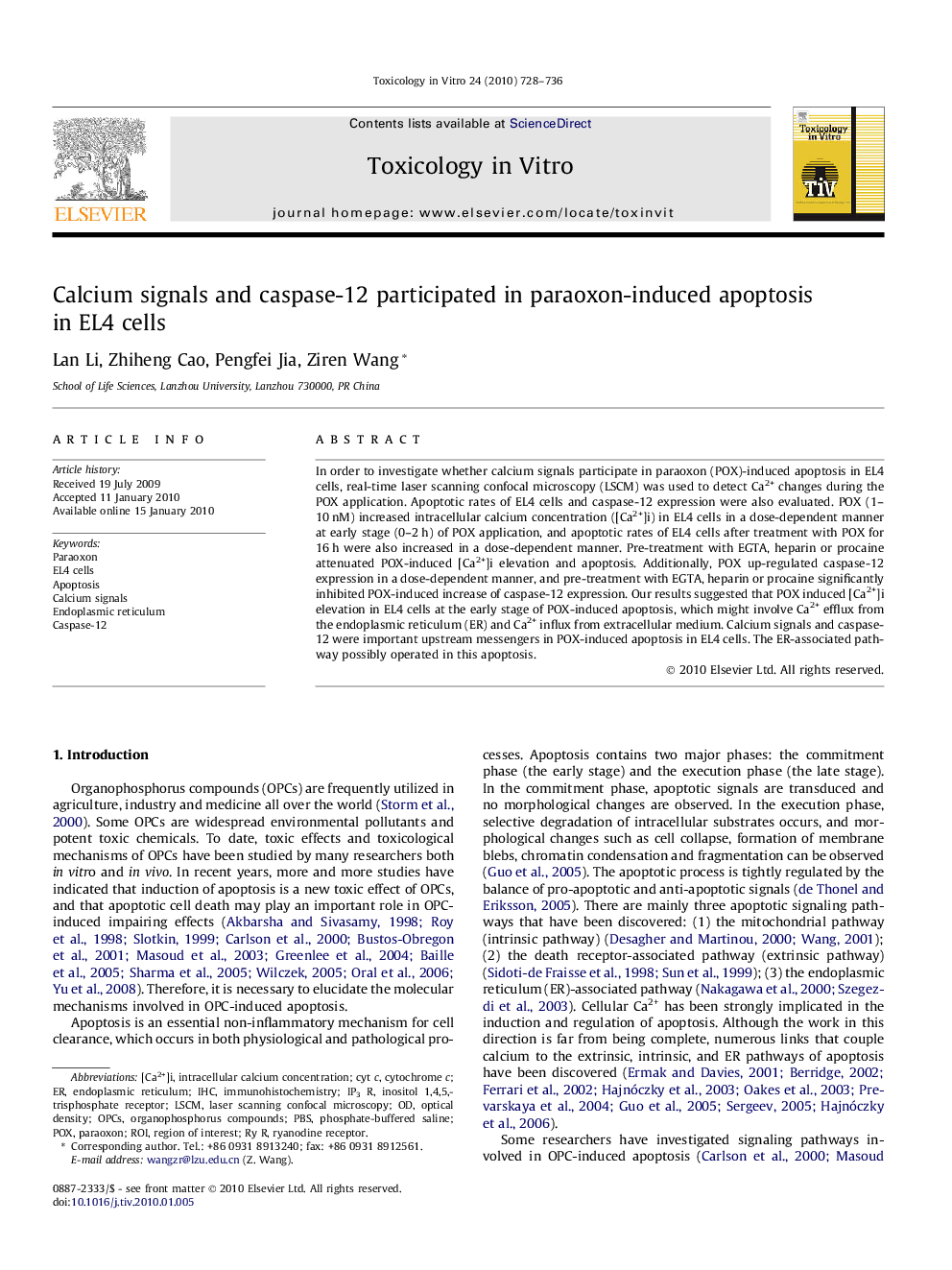| Article ID | Journal | Published Year | Pages | File Type |
|---|---|---|---|---|
| 2602925 | Toxicology in Vitro | 2010 | 9 Pages |
Abstract
In order to investigate whether calcium signals participate in paraoxon (POX)-induced apoptosis in EL4 cells, real-time laser scanning confocal microscopy (LSCM) was used to detect Ca2+ changes during the POX application. Apoptotic rates of EL4 cells and caspase-12 expression were also evaluated. POX (1-10Â nM) increased intracellular calcium concentration ([Ca2+]i) in EL4 cells in a dose-dependent manner at early stage (0-2Â h) of POX application, and apoptotic rates of EL4 cells after treatment with POX for 16Â h were also increased in a dose-dependent manner. Pre-treatment with EGTA, heparin or procaine attenuated POX-induced [Ca2+]i elevation and apoptosis. Additionally, POX up-regulated caspase-12 expression in a dose-dependent manner, and pre-treatment with EGTA, heparin or procaine significantly inhibited POX-induced increase of caspase-12 expression. Our results suggested that POX induced [Ca2+]i elevation in EL4 cells at the early stage of POX-induced apoptosis, which might involve Ca2+ efflux from the endoplasmic reticulum (ER) and Ca2+ influx from extracellular medium. Calcium signals and caspase-12 were important upstream messengers in POX-induced apoptosis in EL4 cells. The ER-associated pathway possibly operated in this apoptosis.
Keywords
Related Topics
Life Sciences
Environmental Science
Health, Toxicology and Mutagenesis
Authors
Lan Li, Zhiheng Cao, Pengfei Jia, Ziren Wang,
